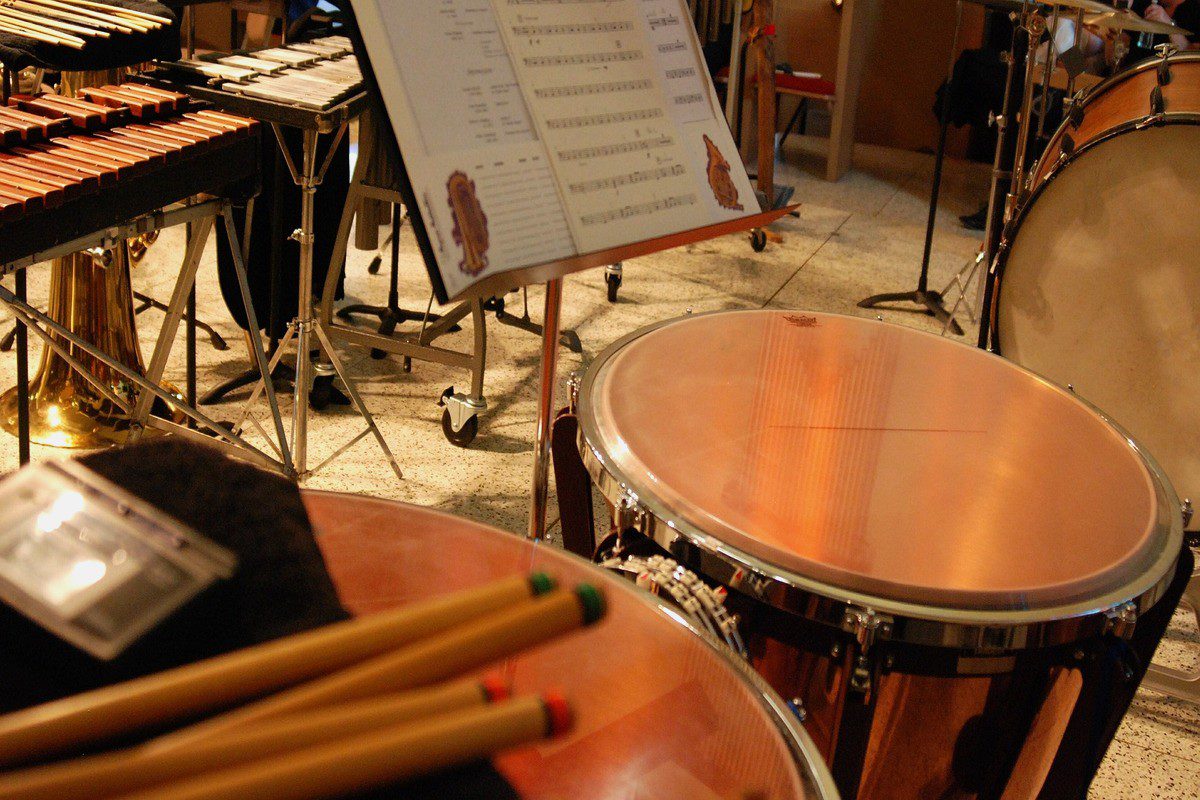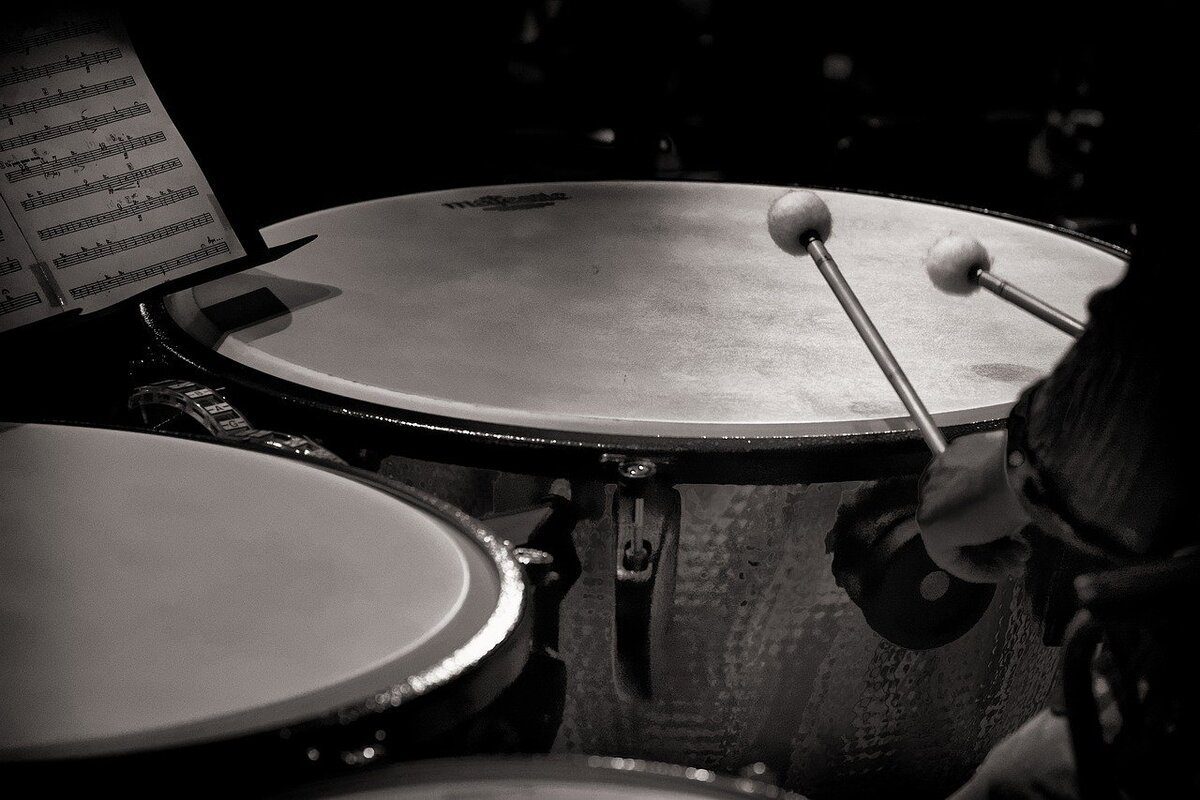What’s the beat that echoes with power and prestige? Kettledrums. Where did these fascinating instruments originate, and how did they become an integral part of music history? Let’s dive into the world of kettle drums to find out. Can you feel the thunderous rhythm in your bones?
What are kettledrums? Kettledrums, also known as timpani, are percussion instruments consisting of a hemispherical metal vessel with a stretched membrane played using soft-headed wooden drumsticks.
Where did kettledrums originate?
Kettledrums have an ancient origin, likely imported from the Middle East by Crusaders in the 12th or 13th century. These early kettledrums were small and often appeared in pairs, hung around the player’s waist. Can you imagine the impact they made on the medieval music scene?

In the 17th century, composer Jean-Baptiste Lully introduced kettledrums into the opera orchestra, solidifying their place in classical music. How did the powerful sound of kettledrums contribute to the grandeur of baroque compositions? During this period, kettledrums were commonly used to express joy or triumph, enhancing the emotional impact of the music. Their booming resonance added a sense of awe and majesty to performances.
AKAI Professional MPK Mini MK3

AKAI Professional MPK Mini MK3
What is the historical significance of kettledrums?
In Europe, the appearance of kettledrums and trumpets played on horseback during ceremonial events and on the battlefield left a lasting impression. Their impressive display led to a desire among the nobility to control the musicians who played these instruments.
In 1623, the trumpeters and drummers in the Holy Roman Empire even formed a guild to protect their status and regulate the use of kettledrums. Can you imagine the influence and prestige associated with being a skilled kettledrum player?

Kettledrums played a vital role in signaling cavalry on the battlefield and were typically restricted to military units that protected monarchs. Capturing an enemy’s kettledrums became a high-stakes prize, symbolizing not only victory for the captor but also a humiliating defeat for the side whose drums were seized.
The rarity of silver kettledrums made them extraordinary and highly coveted instruments. They were exclusively commissioned for the most powerful European royals, acting as public displays of wealth and magnifying the prestige of their owners. The use of silver drums became an act of political propaganda, reminding onlookers of the immense military power held by the monarch and the state.
What are the unique tuning capabilities of kettledrums?
One fascinating aspect of kettledrums in the modern orchestra is their capability to produce specific pitches. Each drum can be tuned to a distinct note by adjusting the tension of the drumhead. Composers take advantage of this feature to introduce melodic elements and harmonies into their compositions.
In today’s modern orchestra, you’ll typically find two or more kettledrums, each with its unique tuning.
By carefully orchestrating the interplay between kettledrums and other instruments, they create captivating tonal relationships that enhance the overall sonic experience. In today’s modern orchestra, you’ll typically find two or more kettledrums, each with its unique tuning. Composers and conductors determine the specific pitches required for a piece of music and assign them to different drums.
What are the different techniques used in kettledrums?
The way kettledrums are played also adds to the versatility of their sound. Percussionists utilize different techniques and mallet choices to achieve a range of timbres and effects. By adjusting the force, angle, and placement of the strikes, they can produce varying tones, from resonant and booming to subtle and delicate. The choice of mallets, such as soft or hard-headed drumsticks, offers further possibilities for nuanced expression.
Here’s a dos and don’ts table for playing kettledrums:
| Dos | Don’ts |
|---|---|
| Do maintain proper posture and technique when playing kettledrums to avoid strain or injury. | Don’t slouch or adopt improper body positions while playing. |
| Do strike the drumhead at the center for a clear and resonant sound. | Don’t strike too close to the edge of the drumhead, as it can produce an undesirable tone. |
| Do vary your striking intensity to produce different dynamics and tonal colors. | Don’t use excessive force or strike the drum inconsistently, as it can result in inconsistent sound quality. |
| Do listen attentively to the ensemble and adjust your playing to maintain proper balance and musicality. | Don’t overpower other instruments or disregard the musical context while playing. |
| Do practice control and precision to achieve accurate and well-defined rhythms. | Don’t rush or play with inconsistent timing, as it can disrupt the overall musical performance. |
What are some tips for using kettledrums for your music production?
While kettledrums may be more commonly associated with orchestral arrangements, their expressive qualities, and unique sound can be incorporated into various genres and music production contexts. Here’s a suggestion for embracing the power of kettledrums in your own music:
- Experiment with Virtual Instruments: Explore virtual instrument libraries or sample packs that offer high-quality kettledrum sounds. These tools provide the flexibility to integrate the thunderous impact of kettledrums into your electronic, cinematic, or experimental productions.
- Layering and Sound Design: Consider layering kettledrum samples with other percussive elements or synthesizer sounds to create hybrid textures and unique sonic combinations. This allows you to infuse your music with the distinctive character of kettledrums while exploring innovative sonic landscapes.
- Dynamic Processing and Automation: Experiment with dynamic processing techniques to enhance the impact and expression of kettledrums in your mix. Utilize techniques such as compression, EQ, and automation to shape their tonal characteristics and emphasize key moments in your compositions.
If you want even more great tips and information, check out the video.
Frequently Asked Questions (FAQs)
As we wrap up this blog post on kettledrums, let’s address some common questions that may still be on your mind.
How can I achieve the best sound quality when incorporating kettledrums into my music production?
To achieve the best sound quality with kettledrums, it’s crucial to consider proper mic placement, experimentation with different miking techniques, and ensuring a balanced mix with other instruments. Additionally, paying attention to room acoustics and utilizing appropriate processing and equalization can help achieve the desired sonic results.
Can I use virtual kettledrum samples in my home recording studio?
Absolutely! Virtual kettledrum samples have become increasingly popular and offer a convenient way to incorporate the majestic sound of kettledrums into your home recordings. Many professional-grade virtual instrument libraries provide realistic and high-quality kettledrum samples that can be easily integrated into your music production projects.
Are kettledrums difficult to play and incorporate into my compositions?
While mastering the art of playing kettledrums takes practice and skill, modern technology has made it more accessible for composers and producers to incorporate them into their compositions. With the right resources, techniques, and creative approach, you can successfully incorporate kettledrums into your music production, adding a unique and captivating element to your compositions.
Conclusion
From thunderous resonances to intricate nuances, kettledrums have played an integral role in the world of music for centuries. With their rich history, versatile sound, and ability to evoke emotions, kettledrums have found their place in diverse genres and continue to captivate listeners worldwide.
Did I cover everything you wanted to know? Let me know in the comments section below (I read and reply to every comment). If you found this article helpful, share it with a friend, and check out my full blog for more tips and tricks on incorporating unique instruments into your music productions. Thanks for reading, and may your musical journey be filled with awe-inspiring beats and harmonious melodies!
Key Takeaways
This article covered the fascinating world of kettledrums and their significance in music production. Here are some key takeaways:
- Kettledrums, or timpani, are percussion instruments with a hemispherical metal vessel and a stretched membrane.
- They are capable of producing specific pitches by adjusting the tension of the drumhead.
- Kettledrums have been used throughout history to convey power, triumph, and nobility in orchestral compositions.
- Incorporating kettledrums into your music production can add depth, impact, and expressive qualities to your compositions.
- Virtual kettledrum samples offer accessibility and convenience in home recording studios.
- Proper mic placement, miking techniques, and attention to room acoustics are crucial for achieving optimal sound quality with kettledrums.















